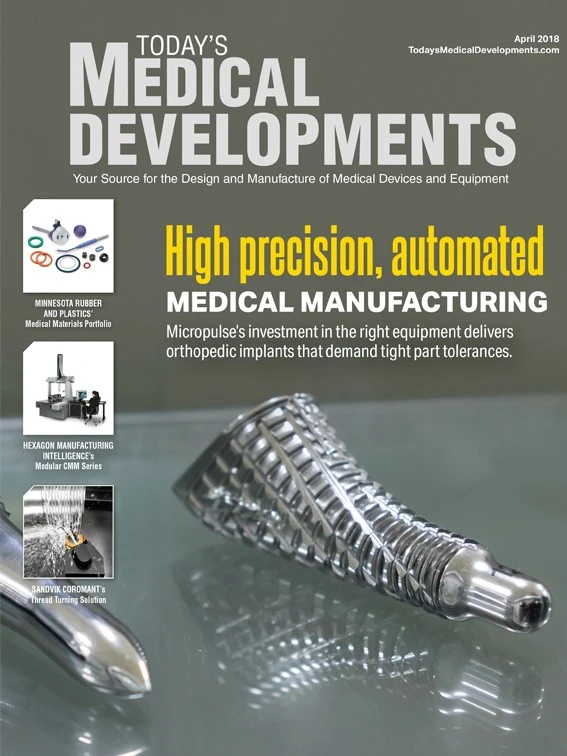
Biomedical engineers at Case Western Reserve University (CWRU) are growing tracheas by coaxing cells to form three distinct tissue types after assembling them into a tube structure – without relying on scaffolding strategies currently being investigated by other groups.
Successful trials and further research and development could someday let surgeons replace damaged or faulty tracheas with fully functional, natural-tissue, says Eben Alsberg, professor in biomedical engineering and orthopaedic surgery and director of the Alsberg Stem Cell & Engineered Novel Therapeutics Lab at CWRU.
The problem
Patients may need a rebuilt trachea because of tumor resection or an injury that results in tracheal stenosis, a narrowing or constricting of the windpipe that inhibits breathing.
Doctors have limited solutions for damaged tracheas. They can only surgically join ends if less than half of the trachea is damaged in adults or less than 30% in children. Implanting stents or simply clearing away tissue obstructing the airway offers only short-term relief as the repaired tube tends to close off again after about a year.
Tissue-engineering approaches, using synthetic or natural materials as scaffolding for cells have encountered challenges – uniformly seeding cells on the scaffolding, recreating multiple tissue types found in the native trachea, tailoring the scaffolding degradation rate to equal the rate of new tissue formation, and recreating important contacts between cells because of the intervening scaffold.
Scaffold-free approach
The CWRU strategy being pursued, however, wouldn’t have those problems because it doesn’t rely on a separate scaffold structure, Alsberg notes. According to his research, a new trachea replacement must do three critical things to function properly:
Maintain rigidity to prevent airway collapse when the patient breathes
Contain immunoprotective respiratory epithelium, the tissue lining the respiratory tract, which moistens and protects the airway and functions as a barrier to potential pathogens and foreign particles
Integrate with host vasculature to support epithelium viability
Self-assembling rings developed in the labs of Alsberg and Marsha Rolle, associate professor of biomedical engineering, Worcester Polytechnic Institute, Worcester, Massachusetts, meet the three requirements because they can fuse together to form cartilage tubes and prevascular tissue tubes; prevascular refers to tissues potentially ready to participate in the formation of blood vessels, though not yet functional in that way.
The cartilage rings are formed by aggregating marrow-derived-stem cells in ring-shaped wells. Polymer microspheres containing a protein that induces the stem cells to become chondrocytes, or cells that form cartilage, are also incorporated into the cell aggregates.
These prevascular rings contain the marrow-derived stem cells and endothelial cells, the thin layer of cells that line the interior of blood vessels.
Researchers then coat the tubes with epithelial cells to form multi-tissue constructs that satisfy the requirements: cartilage provides rigidity, epithelium serves the role of immunoprotection, and the vascular network permits blood flow to feed and integrate the new trachea tissue.
Using this method, Alsberg, Rolle, and their teams have been able to engineer highly elastic neo-tracheas of various sizes, including tissues similar to a human trachea. When these tracheas were implanted under the skin in mice, there was evidence the prevascular structures could join up with the host vascular supply.
Case Western Reserve University
www.case.edu
Worcester Polytechnic Institute
www.wpi.edu

Explore the April 2018 Issue
Check out more from this issue and find your next story to read.
Latest from Today's Medical Developments
- Roundup of some news hires around the manufacturing industry
- Mazak’s INTEGREX j-Series NEO Machines
- The Association for Advancing Automation (A3) releases vision for a U.S. national robotics strategy
- Mitutoyo America’s SJ-220 Surftest
- #56 - Manufacturing Matters - How Robotics and Automation are Transforming Manufacturing
- STUDER looks back on a solid 2024 financial year
- HANNOVER MESSE 2025: Tailwind for industry
- Find out the latest developments in tool path strategies for machining







